At the Harbour George River Group’s meeting October 2023, James Middleton, who is a member of the Group and a professional landscape gardener, described his practice in landscape design. His talk was illustrated with reference to a community garden project he is working on with the Clemton Park Uniting Church. Members of the church group also talked about their vision for the garden. This was followed by a discussion on how to implement the garden vision with a limited budget and lots of muscle power.
James’ Check Lists for Garden Design:
Principles of designing a garden apply to any garden and many factors must be considered before working on the aspect of the design relating to native plants. My interest lies in providing a relationship between different native plants, trying to find combinations that harmonise and offset one another. That inspiration comes from nature. The Clemton Park Uniting Church is not a bush garden, rather a garden to be established with local native plants, that is hopefully eventually self-sustaining.
General Factors for Any Garden:
- Light & shade, summer & winter aspects, wind, screening.
- Existing vegetation & structures, overhead power lines, sewer pipes.
- Condition of soil and drainage – What happens to water – does it absorb or run off.
- Water supply.
- Focal points – points where all plants can be seen.
- Needs of client – style – naturalism, formal, cottage, Japanese, etc.
- Uses of the space.
- Structures including paving, shade, BBQ/firepit, water, seating, retaining walls, borders, paths, clotheslines, storage bins, etc.
- Maintenance.
- Edible plants.
- Measuring the space accurately.
- Budgetary restraints.
Specific Research into Plants:
- Plants growing in surrounding areas, including native ornamental gardens and thriving species.
- Bushland exploration in Clemton Park and visits to Wolli Creek, Sylvan Grove, and Georges River National Park.
- Research into existing flora from the area using Canterbury Bankstown Council’s Native Plant selector.
- Utilization of APS NSW and ANPSA websites as incredible knowledge resources.
Design:
- Scale drawing of existing space: Create a base plan on tracing paper.
- Sketch separation of space: Outline garden areas, lawn or turf, and paths.
- If sloping site: Consider drawing a ‘side on’ perspective.
- Incorporation of structures: Include firepit, paths, borders, seating, water features, fencing, paving, and rocks.
Soil Preparation/Amelioration:
- Borders – grass: Remove existing turf (by machine).
- Compaction: Add compost only when planting to prevent weeds; gypsum if there is clay.
- Mulch: Use composted leaf mulch preferably.
- No synthetic chemicals such as weedicides: Aim to improve soil biota.
- No irrigation for native gardens to avoid weed germination; opt for regular hand watering for establishment, especially during summer. Irrigate only when no one is available for manual watering.
- Implement irrigation for exotics, particularly in vegetable gardens.
- Follow a maintenance schedule using a hose, treating water as habitat for both plants and other organisms.
Plant Selection: Layering of the Garden
- Canopy: Large or small trees.
- Mid layer: Tall or small shrubs.
- Ground covers.
- Base plants.
Factors Governing Plant Selection:
Relationship between plants both in terms of height layers as well as width. Plants appropriate to soil conditions Plants appropriate to light – summer and winter, heavy shade, light shade.
- Variation in Texture: Integrate plants with soft, hard, and spiky textures.
- Sensual Qualities: Prioritize plants with sensual features like fragrance, diverse flower colors, and leaf colors.
- Resilience: Select plants that exhibit resilience, competing well with weeds, remaining maintainable, and resisting loss during weeding.
- Habitat Support: Choose plants that provide habitat – food and shelter – for insects, birds, lizards, possums, and frogs.
- Depth and Focal Points: Opt for plants that contribute to depth, considering their size and relation to focal points. Allow adequate space between each plant to prevent competition.
- Content Plants: Prioritize plants that are content in their environment and do not struggle.
- Balanced Plants: Seek plants that achieve a harmonious balance in terms of shape, texture, color, and size.
- Available Plants: Choose readily available plants.
Relationship between plants, based on observations in nature. Use contrasts in foliage, form, size and colour. Examples of plants that work well together and enhance one another:
- Xanthorrhoea with Viola or Scaevola or Brachyscome
- Doryanthes and Lomandra tanika or Dianella
- Crinum and Viola
- Base plant such as Poa or Lomandra – plants that are repeated.
- Poa and Banksia or Eucalyptus haemastoma
- Angophora and Doryanthes
- Westringia and Correa – both clipped
- Baumea (Twig rush) and Marsilea [for damp places]
- Banksia serrata and Brachyscome or Dianella caerulea
- Dianella and clipped Westringia
- Angophora and Lomandra
- Ficinia and pigface (Carpobrotus)
- Poa and Yellow buttons
- Banksia serrata and Actinotus – Flannel flower
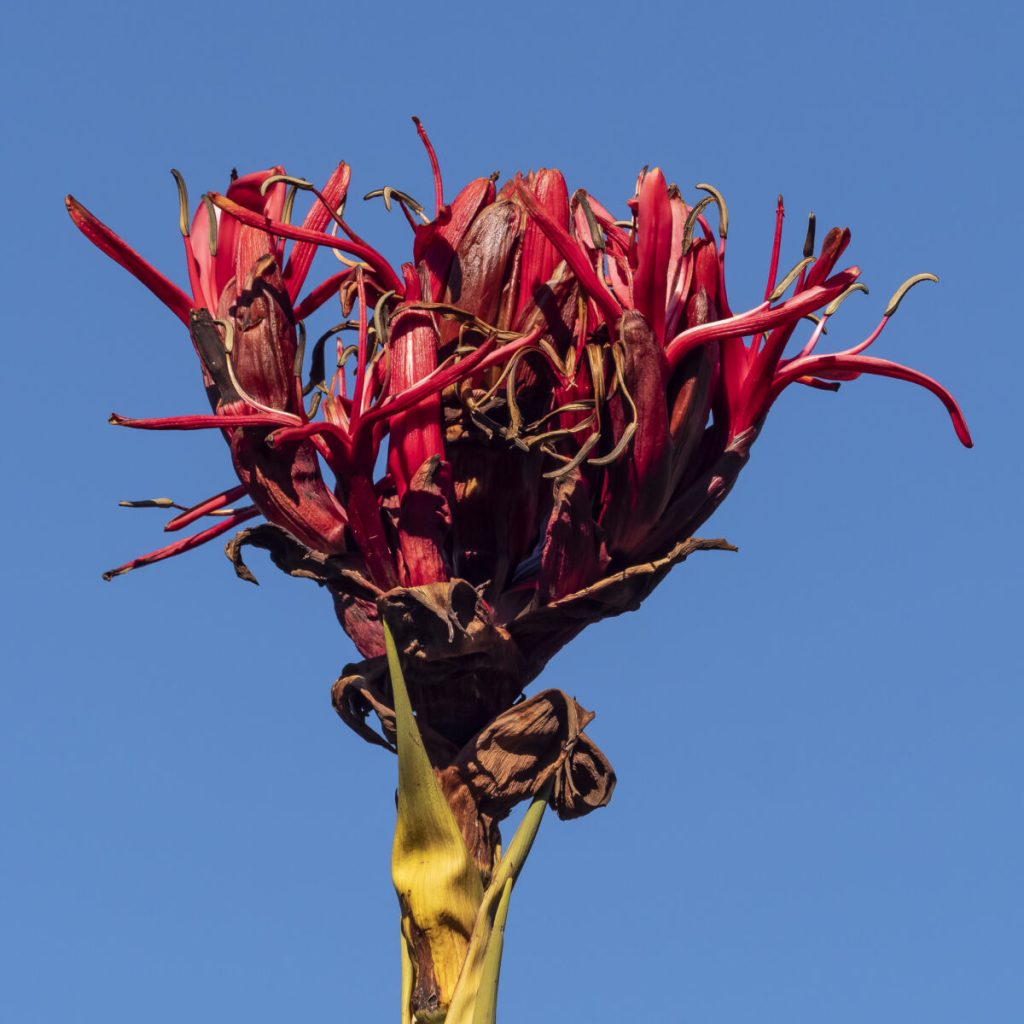
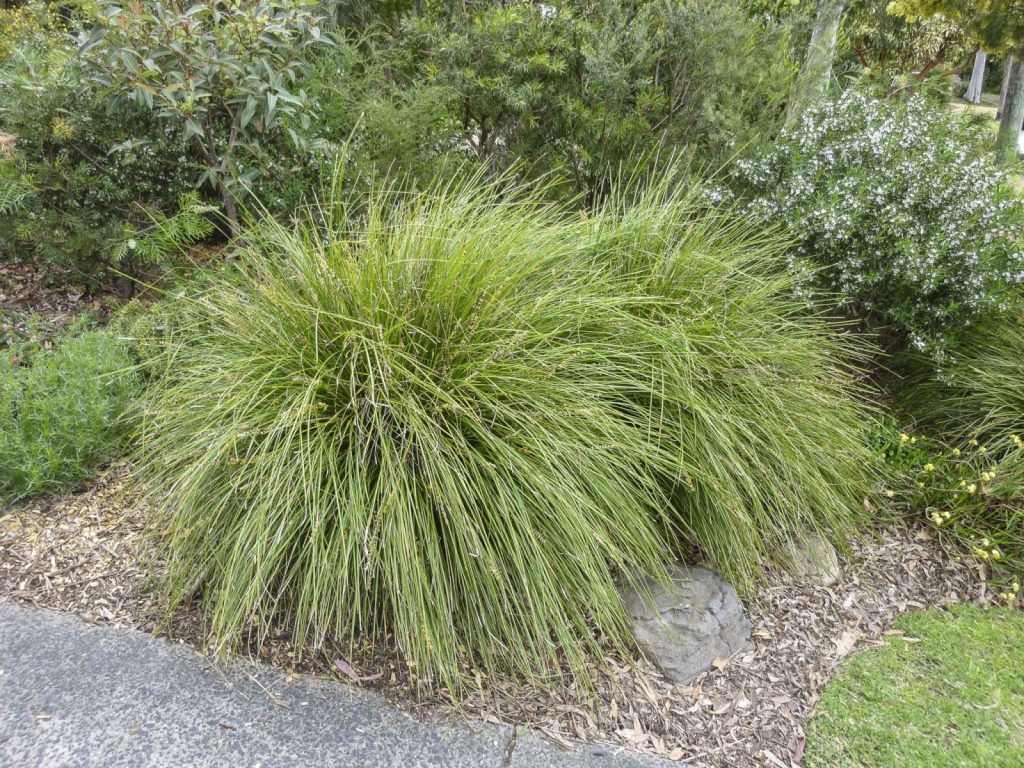
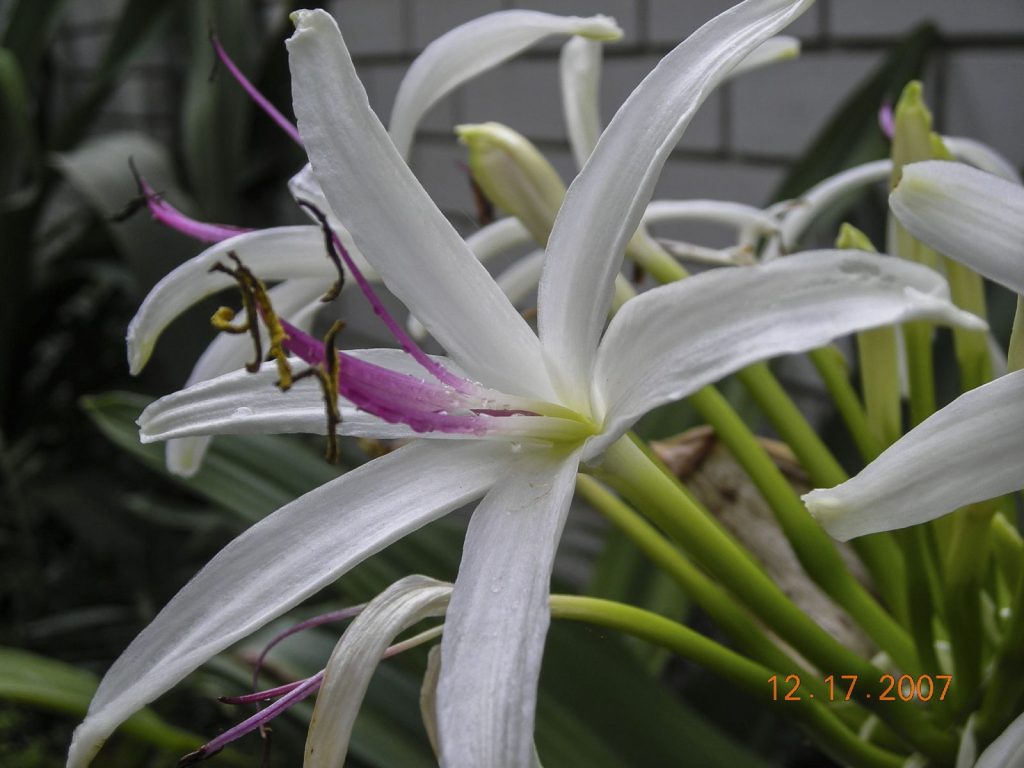
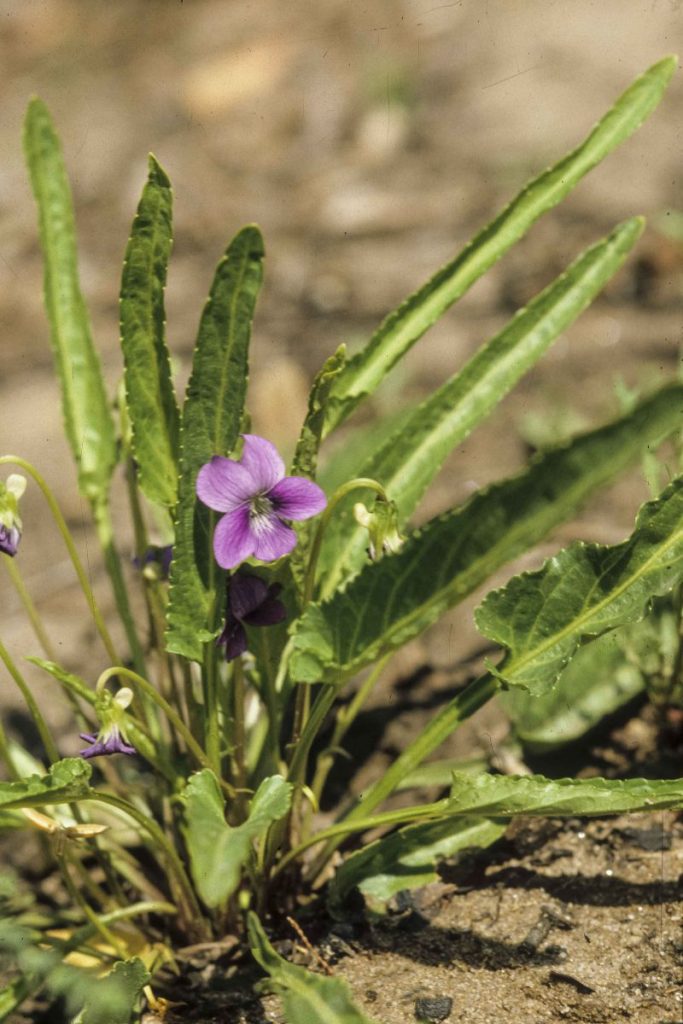
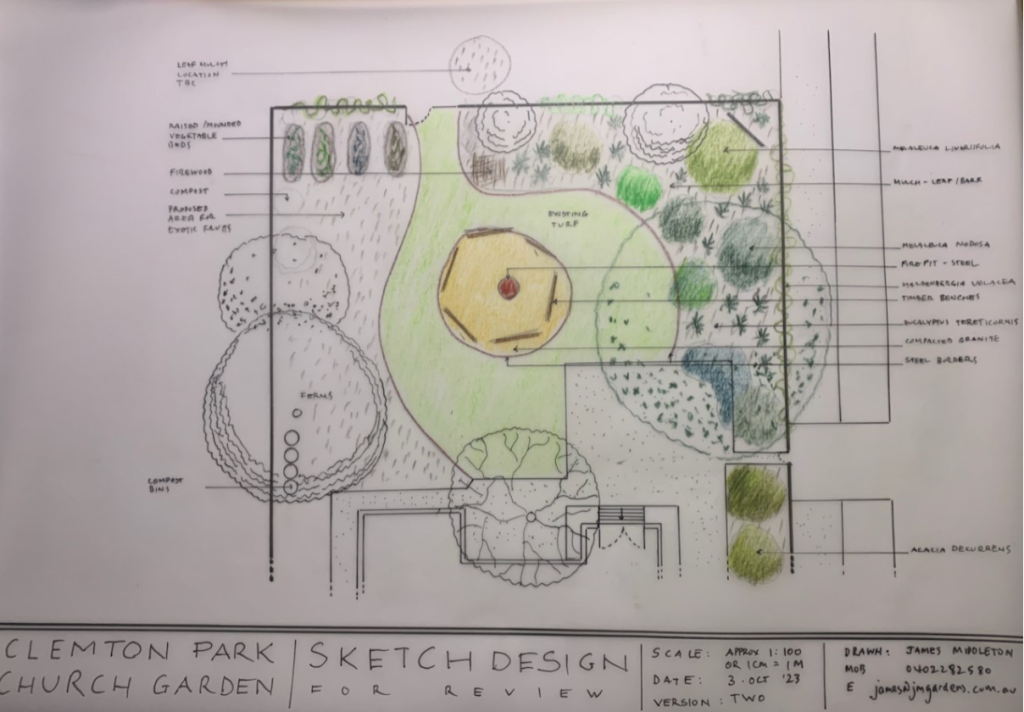
Some of the requirements for the Community Garden are:
- A ‘yarning circle’ around the fire pit for everyone to sit and chat.
- An area for vegetables & food plants the congregation is familiar with. This includes an older Mediterranean congregation, as well as Tongans. Possibly raised garden beds as the soil may be contaminated. Left side in the diagram.
- Native plant garden – fauna-friendly. Right side in the diagram. Also, native vines along the fences.
- A rainwater tank with irrigation for the food gardens and possibly a water feature.
- Keep some of the lawn for kids to run about on.
James has also added more compost bins, a place for firewood and a place on the very wide street verge for loads of mulch to be dropped. Plant selection for the native garden is not yet done. Another of our members, Ashlie Stevenson, who is a horticulturalist, is working on that. The soil was Sydney Turpentine Ironbark Forest, but has been badly degraded with building rubble. The congregation will select plants for the food gardens.
There will be working bees of congregation members arranged to do the heavy lifting as required. Ashlie recommends not planting until Autumn, when the soil is cooler & the plants are becoming dormant. However, the watering system and grass removal can start now as the Church has some funds for this.
Notes from Liz & Graham, in no particular order:
- Mulch – important for enriching soil, leavening heavy clay; poor quality mulch is OK if it is aged well before application.
- Water feature – for aesthetics and to increase biodiversity – importance for birds, frogs, invertebrates.
- Keep plants pruned (including the base of shrubs to allow easier access for weeding underneath).
- Defer planting local grasses until non-native grasses have been eradicated.
- Choice of plants – give preference to local species, consider soil type, exposure to sun and wind.
- Diversity of foliage types for contrast.
- Location of compost bins – in full sun to maximize decomposition versus aesthetics and proximity to existing structures.
We look forward to updates in the coming years as the garden progresses.
